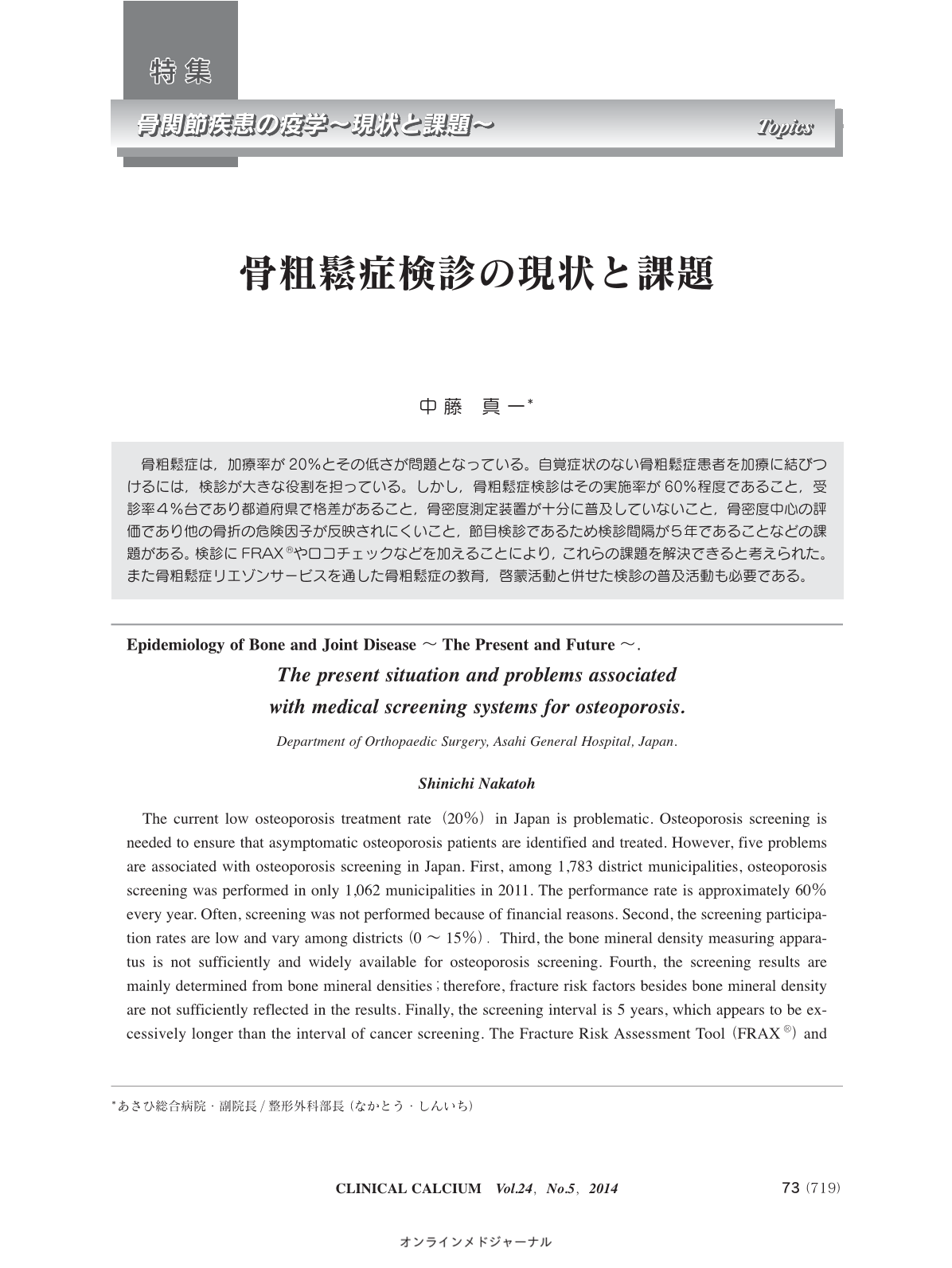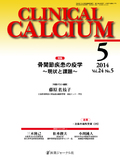Japanese
English
- 有料閲覧
- Abstract 文献概要
- 1ページ目 Look Inside
- 参考文献 Reference
骨粗鬆症は,加療率が20%とその低さが問題となっている。自覚症状のない骨粗鬆症患者を加療に結びつけるには,検診が大きな役割を担っている。しかし,骨粗鬆症検診はその実施率が60%程度であること,受診率4%台であり都道府県で格差があること,骨密度測定装置が十分に普及していないこと,骨密度中心の評価であり他の骨折の危険因子が反映されにくいこと,節目検診であるため検診間隔が5年であることなどの課題がある。検診にFRAX®やロコチェックなどを加えることにより,これらの課題を解決できると考えられた。また骨粗鬆症リエゾンサービスを通した骨粗鬆症の教育,啓蒙活動と併せた検診の普及活動も必要である。
The current low osteoporosis treatment rate(20%)in Japan is problematic. Osteoporosis screening is needed to ensure that asymptomatic osteoporosis patients are identified and treated. However, five problems are associated with osteoporosis screening in Japan. First, among 1,783 district municipalities, osteoporosis screening was performed in only 1,062 municipalities in 2011. The performance rate is approximately 60% every year. Often, screening was not performed because of financial reasons. Second, the screening participation rates are low and vary among districts(0~15%).Third, the bone mineral density measuring apparatus is not sufficiently and widely available for osteoporosis screening. Fourth, the screening results are mainly determined from bone mineral densities;therefore, fracture risk factors besides bone mineral density are not sufficiently reflected in the results. Finally, the screening interval is 5 years, which appears to be excessively longer than the interval of cancer screening. The Fracture Risk Assessment Tool(FRAX®)and locomotion check are useful methods for solving these problems. The addition of these two tools to the specific health check-ups increased the participation of patients from Asahi-machi compared with that previously observed;the use of these tools was inexpensive. Furthermore, education and enlightenment regarding osteoporosis are important to increase the osteoporosis medical treatment rate and to spread awareness regarding osteoporosis screening through osteoporosis liaison services.



